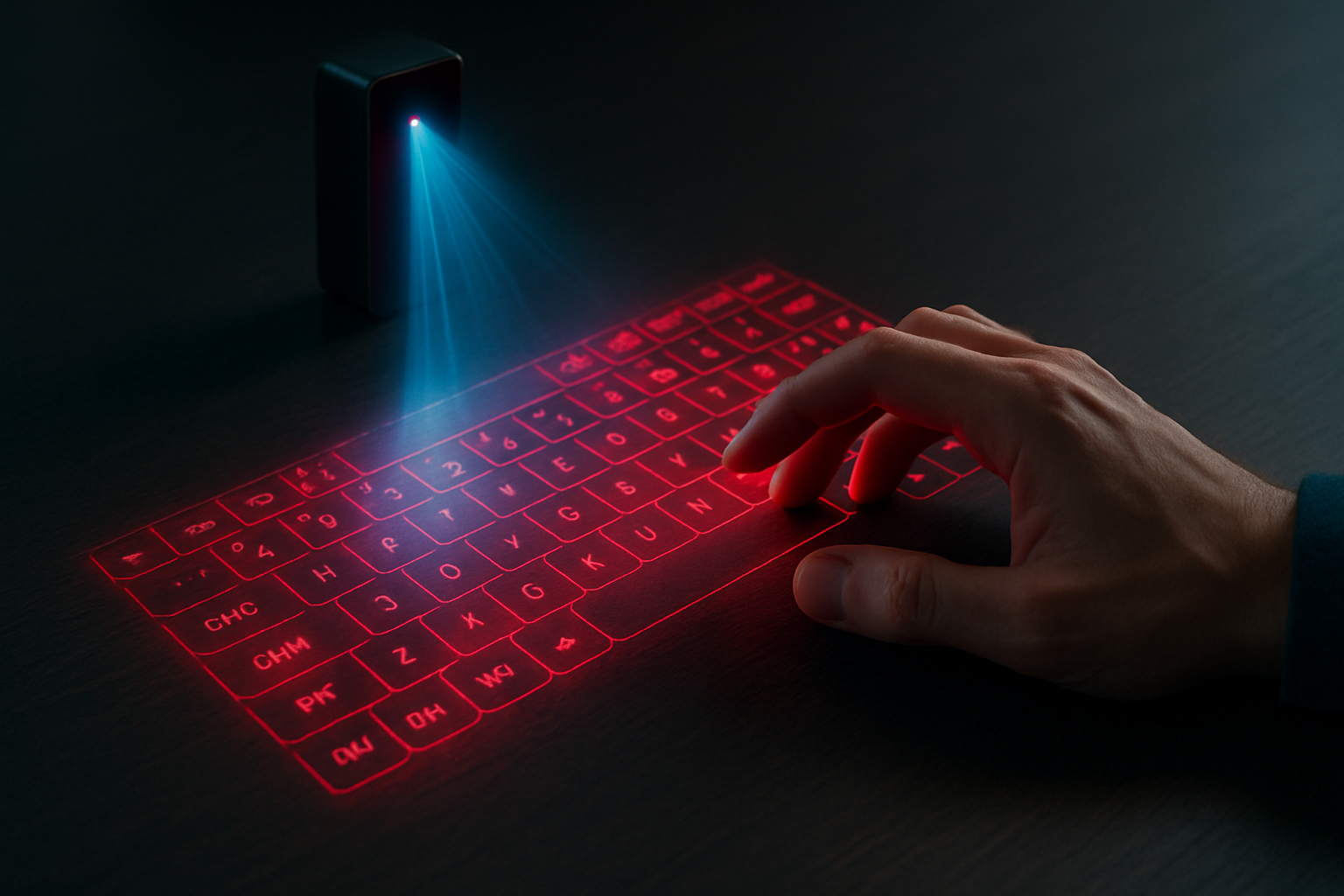Holographic Keyboards: Typing in Thin Air
In the ever-evolving landscape of computer peripherals, a futuristic technology is emerging that could revolutionize how we interact with our devices. Holographic keyboards, once confined to the realm of science fiction, are now inching closer to reality. These ethereal input devices promise to transform any flat surface into a functional keyboard, blending the tactile familiarity of physical keys with the convenience of projected light. As we stand on the cusp of this innovative leap, let's explore the potential and challenges of typing in thin air.

At its core, a holographic keyboard uses light projection to display a keyboard layout on any flat surface. Advanced sensors and cameras track finger movements, translating them into keystrokes. This technology eliminates the need for physical hardware, potentially allowing for more ergonomic and customizable typing experiences.
How Holographic Keyboards Work
The magic behind holographic keyboards lies in a combination of projection technology and motion sensing. A small device houses a projector that casts the image of a keyboard onto a surface. Infrared or laser technology creates a plane just above the projected image, which, when broken by a user’s fingers, registers as a keystroke.
Sophisticated algorithms interpret these movements, distinguishing between intentional key presses and accidental gestures. Some systems even incorporate haptic feedback, using sound waves to simulate the tactile sensation of pressing physical keys, enhancing the user experience.
The Potential Benefits
Holographic keyboards offer several advantages over their physical counterparts. Portability is perhaps the most obvious benefit – a full-sized keyboard that fits in your pocket. This could be a game-changer for mobile professionals and travelers who need a proper typing interface on the go.
Customization is another key advantage. Users could potentially switch between different keyboard layouts, languages, or even custom designs with a simple software update. This flexibility could greatly enhance productivity for multilingual users or those with specific typing needs.
Moreover, holographic keyboards could be more hygienic than traditional keyboards, which are notorious for harboring bacteria. With no physical surface to clean, these virtual interfaces could be particularly appealing in shared workspaces or public terminals.
Current Limitations and Challenges
Despite their potential, holographic keyboards face several hurdles before widespread adoption. The lack of physical keys can be disorienting for touch typists who rely on tactile feedback. While some systems attempt to simulate this sensation, replicating the feel of a real keyboard remains challenging.
Accuracy is another concern. Early prototypes have struggled with precisely detecting finger movements, leading to typing errors. Environmental factors like ambient light can also interfere with the projection and sensing mechanisms, potentially limiting where these keyboards can be used effectively.
Battery life is a significant consideration for portable holographic keyboard devices. The power required for continuous projection and sensing could quickly drain mobile devices, potentially offsetting the portability advantage.
The Market Landscape
Several companies are currently developing holographic keyboard technology, with varying approaches and degrees of success. While specific pricing is not yet widely available, industry experts estimate that early consumer models could range from $100 to $300, positioning them as premium peripherals.
The potential market impact is substantial. As remote work and mobile computing continue to grow, the demand for portable, efficient input devices is likely to increase. If holographic keyboards can overcome their current limitations, they could disrupt the traditional keyboard market, estimated to be worth over $4 billion globally.
Looking to the Future
As holographic keyboard technology matures, we can expect to see improvements in accuracy, haptic feedback, and energy efficiency. Integration with augmented reality (AR) systems could lead to even more immersive and flexible computing experiences, where virtual keyboards could be summoned in three-dimensional space.
The implications extend beyond traditional computing. Holographic interfaces could find applications in fields like medicine, where sterile input methods are crucial, or in extreme environments where physical hardware is impractical.
While holographic keyboards may not entirely replace their physical counterparts in the near future, they represent an exciting step towards more versatile and adaptable human-computer interaction. As we continue to push the boundaries of what’s possible in computing, the idea of typing on thin air may soon become as commonplace as swiping on a touchscreen is today.




